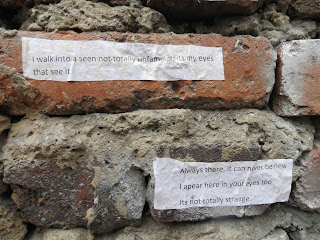 |
| A tank fires into the Palacio de Justicia on Plaza Bolivar in Nov. 1985. The M-19 guerrillas had taken over the building and were holding the members of the Supreme Court hostage. |
Colombia's defense in an international human rights court has made waves by claiming that nobody was 'disappeared' during the 1985 retaking of the Palacio de Justicia from M-19 guerrillas who had invaded it.

The M-19's November 1985 attack on the Justice Palace and the ensuing retaking by the military remains an open sore in Colombian politics and society. Last year, a court ordered the military to make a Public apology for human rights violations committed by the military. The ruling, which has never been fulfilled, had particular relevance because current Bogotá Mayor Gustavo Petro was a leader of the M-19 guerrillas. Several other one-time M-19 leaders are now in Congress.
More than 100 people died in the episode, including all but one of the guerrillas, many Justice Palace employees, visitors and 11 of the 12 Supreme Court justices. Some simply disappeared without a trace.
 |
Guerrilla Irma Franco and
cafeteria administrator
Carlos Rodriguez. Both
apparently left the
Justice Palace alive but
were never seen again. |
But a number of people from inside the Justice Palace were reported seen alive outside the building or inside the neighboring Casa del Florero, which the military was using as its command post. Some of those apparent survivors were never seen again or were found dead in the burned building, as if killed in the fired which consumed the building.
Court rulings, public opinion and news reports all seem to agree that the military committed human rights violations, including disappearances, during the counterattack. Other high Colombian officials have acknowledged two cases of disappearances: a guerrilla and the administrator of the building's cafeteria, both of whom were reported seen alive outside the building. That's why the Colombian state's argument last week in a case before the Inter-American Court of Justice surprised many, and suggested that the lawyers were defending accused military officers rather than Colombia as a whole.
The government's lawyer argued that the disappeared had all died in the conflagration which destroyed the Justice Palace building. The fire's cause is still debated. According to some sources, cocaine king Pablo Escobar helped finance the M-19's attack in exchange for the guerrillas promising to destroy incriminating legal documents.
Two military officers have been tried, convicted and given prison terms for crimes committing during the retaking. But the military and conservative political parties ask why the M-19, who started it all, have not had to face justice.
 |
| Llamas walk past the rebuilt Justice Palace on Plaza Bolivar. |
 |
'A tragic sacrifice by forces of subversion,' who
destroyed evidence against narcotraffickers. |
 |
A plaque on the City Hall building lists the
names of 12 people who were allegedly 'disappeared.' |
 |
A plaque in a sidewalk denounces 25
years of impunity in the cases of
disappeared people. |
Three memorial plaques on Plaza Bolivar, within yards of the rebuilt Justice Palace, show the continuing polarization over the tragedy. One plaque denounces 'impunity' in the cases of the disappeared. Another, on the City Hall building, lists the name of 12 people who "were disappeared" during the violence. And a third, adjoining plaque, memorializes "
the tragic sacrifice by forces of subversion of justices of the Supreme Court...defenders of the law. The palace was destroyed by the flames, as were the files, whose destruction was sought by the assailants."
(The reference to the files refers to allegations that drug cartel kingpin Pablo Escobar had financed the attack in order to destroy evidence against him.)
By Mike Ceaser, of
Bogotá Bike Tours































































